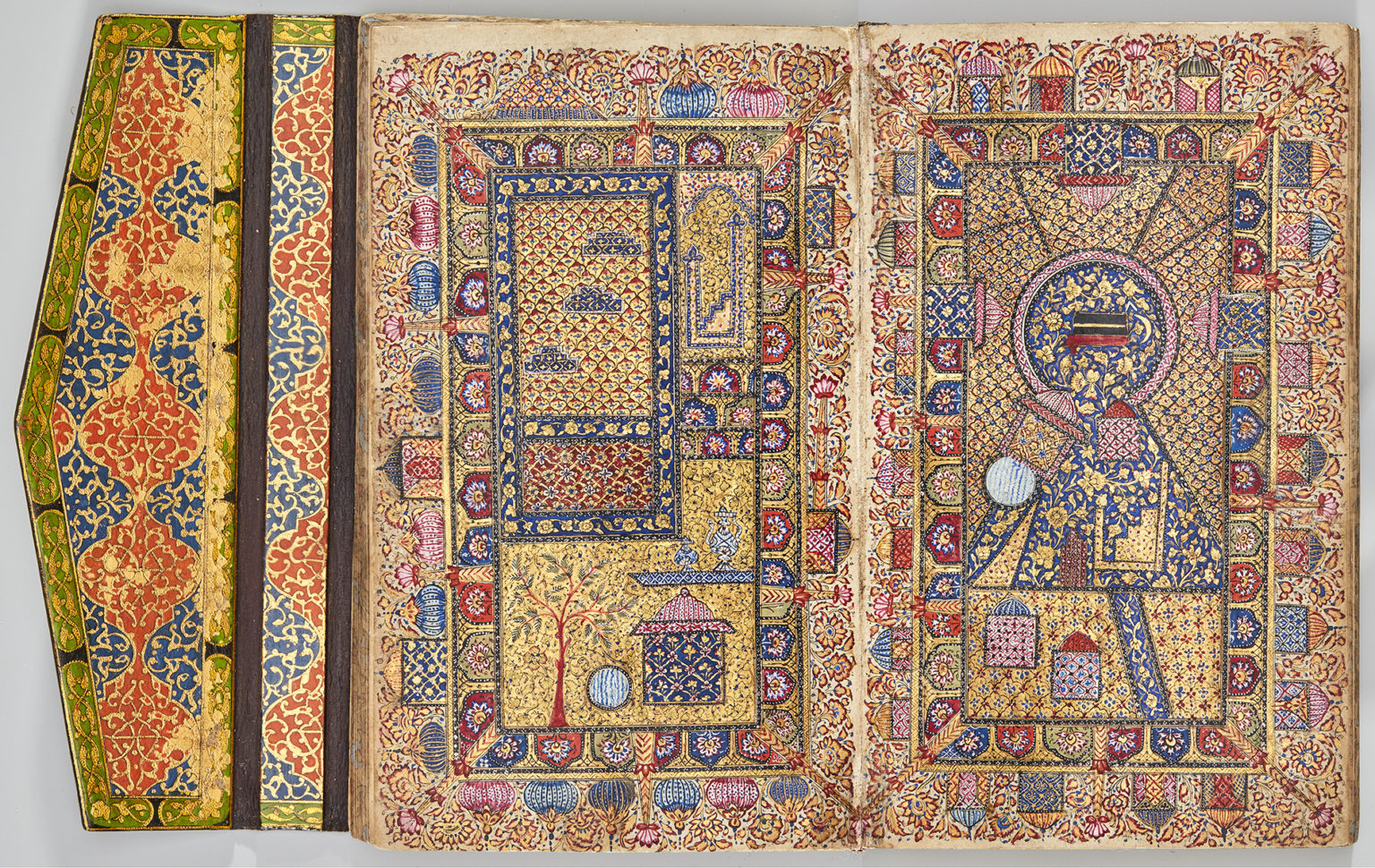
The Aga Khan Museum presents Hidden Stories
By Louise Nunn
Before the flights, migration, and online networks that today easily connect the east with the west, the link between countries was a network of dusty roads and worn sea routes. Think of it: the only source of knowledge for the world outside one’s hometown would have been through the books and traders travelling the Silk Roads.
The Aga Khan Museum’s new exhibition, Hidden Stories: Books Along the Silk Roads, blends beautiful, old books with cutting-edge technologies to examine this all-important transmission of ideas – without which the world would not look the same today.
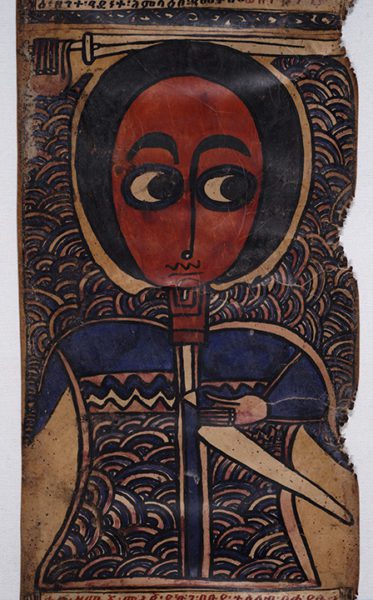
“In general, the Silk Roads fascinate us all, I think – regardless of our cultural and religious background,” says Dr. Filiz Çakır Phillip, co-curator of the exhibition. “It’s where diverse cultures meet each other and create synergy and a platform for exchange. The time we currently live in [with the pandemic], is difficult for all of us, because we want to be connected to each other, to travel and discover unknown worlds. I think this exhibition can offer us [this].”
Hidden Stories is a collaboration between the Aga Khan Museum and the Book and the Silk Roads Project at the University of Toronto. Overall, the exhibition displays 110 objects: over 40 come from the Museum’s own collection, and the rest come from partnerships with the Royal Ontario Museum, Thomas Fisher Rare Book Library, Western University and the Marshall and Marilyn R. Wolf Collection.
The exhibition is set up as both a road to travel along and a book to open and examine from beginning to end. Visitors start with an introduction to the Silk Roads, then move through five carefully curated rooms: The Making of the Book, Gathering Around the Book, The Book and the Body, Micro-CT, and Intercultural Crossroads. Recent advances with micro-CT through the Book and Silk Roads Project first inspired the Aga Khan Museum’s collaborative in-person exhibition.
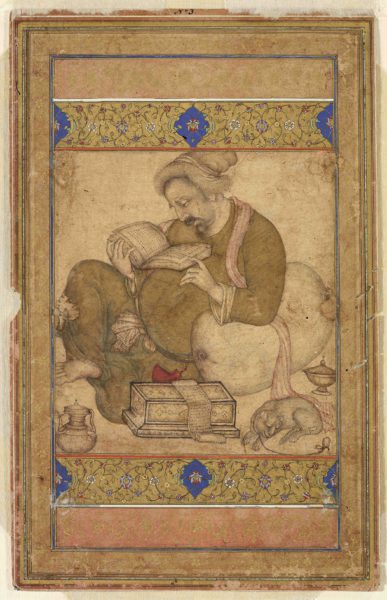
Micro-CT, just like a CT scan, takes a 3D, non-invasive picture of the insides of a book. With it, researchers can look within long-closed books and track the lives they have lived. “Some of the manuscripts are so fragile, you can’t even open them up,” Dr. Çakır Phillip explains, excited at micro-CT’s potential for research but also for preservation. “I always believe as curator, I am responsible for the collection now, but I have borrowed it from the next generation.” Micro-CT can also be found on the exhibition’s digital companion site that will remain updated with new research long after the in-person exhibition has finished.
One of the largest artifacts in Hidden Stories might not seem to belong in the exhibition at first. It is a 3-foot by 8-foot beautiful green cloth, illuminated with a thick border of red, green, and blue star-shaped etchings accented by gold leaf. Spread out equidistant from one another in the middle of the cloth are five similarly coloured, geometric flowers. A beautiful cloth, certainly, yet hidden in the tiniest of script, covering every inch of the green fibres lies another treasure: the flowing story of the complete Qur’an.
As visitors lean in close, the fine ridges on the cloth turn out to be a minuscule calligraphy script known as ghubar in Arabic (meaning “dust”). This is just one of the many hidden stories on display at the museum. Like this cloth, each artifact holds a unique set of clues that marks it out for the culture and the people it has come from. For example, the Qur’an On Cloth was created by a calligrapher in India. Dr. Çakır Phillip explains that the calligrapher inscribed on the cloth his start date and end date (this was three years in the making). These personal touches create a unique key that connects the viewer to the date, time, and person behind it. “The more you learn about a book the more you learn about the person or persons behind the book,” Dr. Çakır Phillip explains.
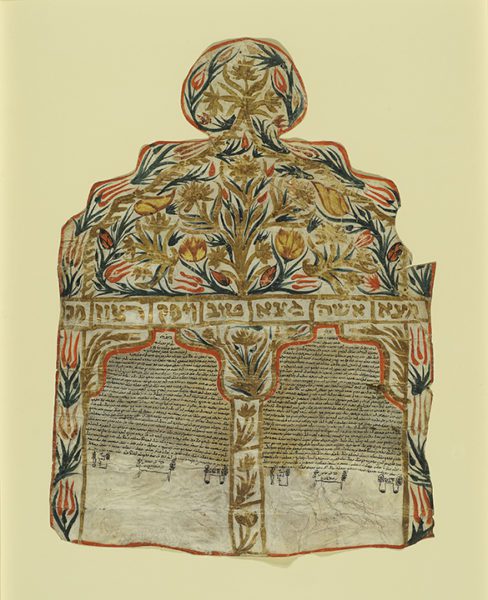
In making books the centre of their exhibition, Dr. Çakır Phillip points out that an essential part of the roads were the ideas, faiths, and cultures found along the Silk Roads. But what “counts” as a book? The Qur’an on cloth may not have come to mind at first, but Dr. Çakır Phillip and her colleagues at the Book and Silk Roads Project dare visitors to look beyond the usual rectangular, bound books we might be used to. “Can we call a book, a book, if it is in a scroll shape, or if it is written on cloth? There are many hidden stories and that is key.”
Visitors will see stories written on colourful scrolls, single leaves of paper or parchment, concertina (think accordion folding), pothi (long stacked sheets connected by a string) and the more familiar codex. Including all of these forms of bookmaking was very important in this exhibition because many of these other forms were more common in certain countries along the Silk Roads than the codex; to remove the form would have been to remove the rich cultural contributions of that region.
One of the first cases in Hidden Stories contains the oldest pages in the exhibition – two artefacts from the 10th century that are from opposite ends of the Silk Roads. There is a Chinese prayer sheet, stamped using a woodblock print on paper; and two leaves of the Mishnah, or Oral Torah, from Egypt, written in ink on parchment. These two artifacts are opposites in many ways: they represent two places, two religions, two types of paper and two stages of printing. Yet, they both represent the co-existence of Jewish practices and ideas with Buddhist norms and thoughts – not to mention Muslim, Hindu, and those of other people groups.
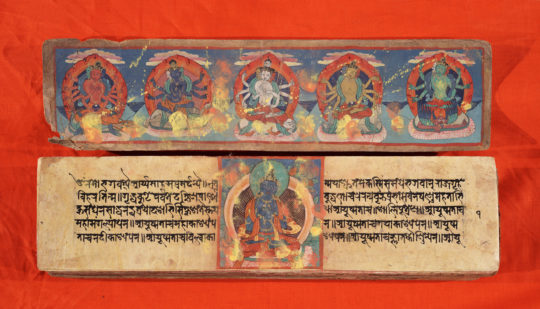
Dr. Çakır Phillip explains: “Our approach [for this exhibition] was to display the richness of the Silk Roads and explore how these cultures were engaged with each other, how they learn from each other, and how the same tradition could exist in different cultures and to help [visitors] see this artistic culmination in books.”
Hidden Stories paints a beautiful and lasting picture of east and west converging. Here, cultural artifacts from across the world have been preserved in Ontario collections, and exist side by side under the same roof, to tell their stories – each from their own unique perspective. “By studying them we can learn so much about our past. And they help us to understand our present and prepare us for our future.”
________________________
Hidden Stories: Books Along the Silk Roads runs through February 27th, 2022 at Toronto’s Aga Khan Museum. For more information visit agakhanmuseum.org/exhibitions/hidden-stories

